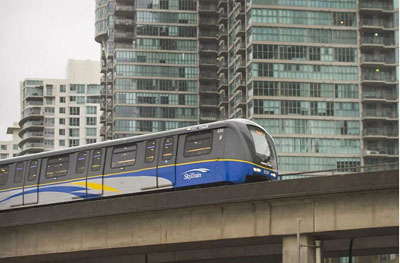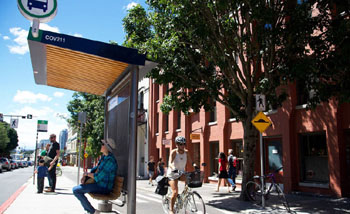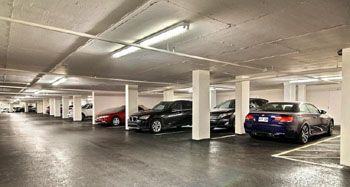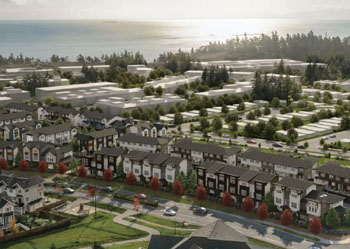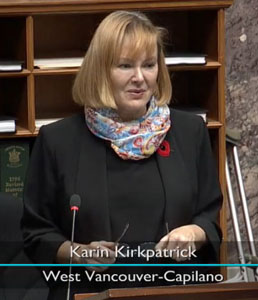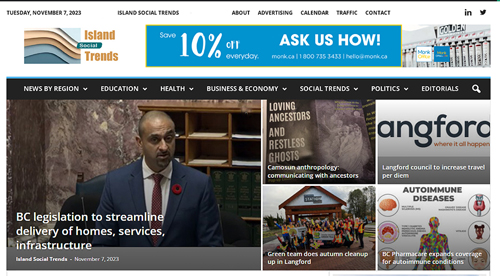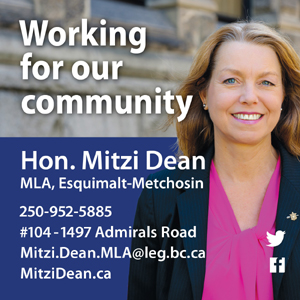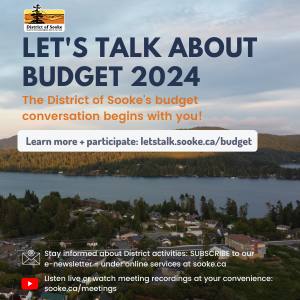Wednesday November 8, 2023 | VICTORIA, BC
by Mary P Brooke | Island Social Trends | HOUSING NEWS SECTION
Today another plank of the BC NDP government’s housing strategy was rolled out. It has to do with aligning high-density housing to be in places where transit services are available nearby.
The legislation was presented in the BC Legislative Assembly today by Housing Minister Ravi Kahlon, supported by Minister of Transportation and Infrastructure Rob Fleming — both in a media session afterward. Last week, Fleming told Island Social Trends that the two ministries have been working together a lot toward the coordinated housing/transportation legislation that was announced today.
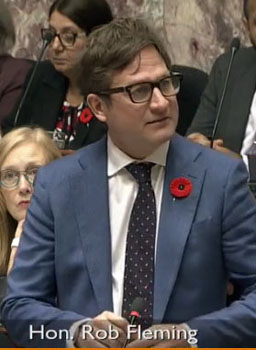
“While we are investing billions in transit infrastructure across B.C., outdated rules are slowing down the delivery of homes next to SkyTrain stations and major bus exchanges. Homes near transit and services that people rely on. Today, I introduced a Bill to fix this,” said Housing Minister Ravi Kahlon in a social media post.
“We need more housing near transit – connecting people to each other and services they need. Today we’re eliminating barriers that block the housing people need. This will get more homes, close to transit, built faster,” said Premier David Eby in social media today.
Today Minister Fleming said a lot of planning work has been done across several ministries so that investments align with affordability concerns, toward the new housing/transit legislation that was introduced by Minister Kahlon today.
Part of a suite of housing legislation changes:
This comes on the heels of major adaptations to the land use management system in BC, including legislation around short-term rentals, allowing multi-unit housing on single-family lots (more so if located near frequent transportation), and front-ending amenity cost charges (ACC’s) so that municipalities can better plan for infrastructure improvements required as housing is brought on stream.
Overall goals of all this massive revision to housing legislation also include people being able to work and live in communities that they call home, said Kahlon today. As an example, he said that well-coordinated new housing ventures would lead to communities where people will have “a short walk” to services like grocery stores, child care centres, and libraries (presumably being compared to suburban developments that are car-dependent).
Legislation includes components to:
- Turn short-term rentals into homes
- Fix outdated zoning rules
- Speed up permit approvals
- Reduce delays
- Fund amenities with certainty in growing communities
Municipalities are being financially supported by the province to undertake the necessary changes to process and staffing, in order to make progress with permitting, development analysis, and Official Community Plan (OCP) changes.
Does this load of new housing legislation override municipalities in terms of their decision-making autonomy and flexibility? Minister Kahlon says the BC government has to “meet the moment” in a housing crisis.
Parking sticks out as an issue:
“Parking will get built but let’s do the right amount of parking,” said Kahlon, but stressed that under the proposed new legislation that project-by-project decisions will be made as to the type and need for parking. He used an example of a housing project for low-income seniors not requiring as much parking as, say, a building that would house young families. Buildings with a commercial component will of course require parking.
Builders and developers will be able to build as much parking as desired for a project but will not be required to meet a minimum standard of parking units (which would add to construction costs unnecessarily in some cases). Kahlon feels this will help projects get approved more quickly.
Doing projects “right size” allows for more affordability and getting the parking component right, said Kahlon today.
He emphasizes that the intended buyer or rental market for any given project should be clearly identified, as a way to determine the right amount of parking.

“We know that with all projects, they do assessments to see how much parking is needed,” said Minister Kahlon in an interview with Island Social Trends today. “Often we’re building more parking than we need,” said Kahlon about housing projects in urban areas “especially near transit”.
Parking for commercial use would be a consideration in all building projects, but buildings where young active residents don’t have cars or rely on bicycles for transportation might have less in the way of parking structures intended to serve a car-based culture.
“People now will be able to think outside the box,” said Kahlon, as to flexible options for parking in residential buildings.
Car usage:
The trend over the last few years to challenge the use of cars has been largely based around hoping to reduce greenhouse gas (GHG) emissions, but now electric vehicles are the big push. Those who need a vehicle for a range of lifestyle purposes (family, employment, business) will still need and want vehicles.
Hopefully there is not a short-term trend to reduce parking in buildings that later might need more parking spaces (e.g. buildings with seniors who receive home-care workers, or family to visit for delivering care).
Kahlon pointed out today about a building included car-share spots, for residents who don’t own a vehicle but might need to drive a vehicle sometimes.
Get involved in OCP discussions:
Minister Kahlon told Island Social Trends today that he would encourage people to get involved in the OCP discussions in their municipalities. Under new legislation, each municipality will be required to update their OCP every five years.

“With this legislation today we’re giving local governments the ability to decide what kind of mix should be in the building,” said Kahlon. That includes a minimal number of floors. He says there will need to be a housing needs report for each project based on amenities and levels of affordability.
“Now the community planning process is going to be more important than ever. I strongly encourage people in all communities to engage in your OCP. So when we have that community plan and good engagement there is better decision-making and that creates more certainty for us to get housing built faster,” said Minister Kahlon today.
That does leave room for omissions as some folks are not savvy about or deeply involved with neighbourhood planning processes; it takes time to follow municipal politics — busy working people (who might have the most significant input) might be too busy to stay informed and fully participate.
This leaves room for the age-old problem of people with more money and time to have greater influence in the political process. Ideally, municipalities will excel even more at public engagement (including online) so that potentially every resident is reached when important community changes are being considered. | Check Calendar for LOCAL MUNICIPAL MEETINGS (Greater Victoria area)
When it comes to affordable housing projects, in many cases the new legislation would be tacitly relying upon non-profit organizations to do their homework and provide strong analysis as to the type of owner or tenant for the proposed building. When it comes down to it, buildings are constructed by developers, so there’s an odd mix of profit-driven development with non-profit interests.
Opposition:
Making housing less costly to build is one way to help control the cost of housing, as suggested by Karin Kirkpatrick, MLA (BC United shadow minister for housing) in discussion about the proposed new housing-transit legislation. She said that is a simple concept.
She also said there should not be taxes on new homes, and that tolls should be back for highways.
However, the cost of housing is impacted by many things beyond local control such as inflation, labour wages, and material production and shipping costs.
“Five pieces of legislation in a-week in a half — it should be more cohesive than this,” said Kirkpatrick. She asked if education, health and transportation ministries were being included in the larger plan. Well indeed, today was about extensive alignment with MOTI, and last week the education ministry announced increased use of modular classrooms (instead of portables where possible).
“The future doesn’t look very good for new homeowners, young families,” said Dan Davies (BC United shadow minister for Social Development and Poverty Reduction). He said that “Bill 46 is out of touch with what British Columbians need for housing”, referring to pushing up housing costs, even though the bill recognizes municipal needs to build infrastructure along with housing expansion.
Davies said that developers in BC are “being scared away” from building homes, because of fees and red tape.
===== RELATED:
- BC legislation to streamline delivery of homes, services, infrastructure (November 7, 2023)
- Hoped-for housing explosion based on multi-unit zoning (November 2, 2023)
- Clamping down on short-term rentals to free up housing stock (October 16, 2023)
- BC Legislature Fall 2023 session: housing, emergency management, crime, international credentialing, reconciliation (October 1, 2023)
- BC housing initiatives announced twice this week (September 29, 2023)
BC Government Housing/Transportation News Release (Nov 8, 2023):
Building more homes near transit hubs is the focus of new proposed legislation aimed at speeding up the delivery of homes and encouraging more communities near the transit, services and amenities that make life better for people.
“Building more homes near transit is good for people, communities, and helps make the most of transit, infrastructure and services,” said Ravi Kahlon, Minister of Housing. “But layers of regulations and outdated rules are stopping this kind of development from becoming a reality in too many municipalities. That’s why we are taking action to remove barriers and deliver more transit-oriented communities, faster.”
This legislation, if passed, will build on work underway to facilitate more transit-oriented development, create more livable communities and tackle the housing crisis. Earlier this year as part of Budget 2023, the Province committed approximately $400 million to deliver thousands of units at or near transit over the next 10 to 15 years by accessing land that is suitable to be acquired near transit hubs and transforming it into thriving communities.
“We’re working to leverage public lands to build more affordable housing in connected, livable communities,” said Rob Fleming, Minister of Transportation and Infrastructure. “This legislation is the next step forward to help remove roadblocks and fast-track more transit-oriented development that works for people in their communities.”
In some cases in B.C., higher-density neighbourhoods have been established around transit hubs, but in other cases, restrictive zoning bylaws and parking requirements, along with delayed development approvals, continue to slow down the delivery of homes and services near transit hubs. As B.C. continues to invest significantly in transit infrastructure, it is important that this investment accommodates additional housing units to create vibrant and livable neighbourhoods.
The proposed legislation will require municipalities to designate Transit Oriented Development Areas (TOD Areas) near transit hubs. These TOD Areas are defined as land within 800 metres of a rapid transit station (e.g., SkyTrain station) and within 400 metres of a bus exchange where passengers transfer from one route to another (e.g., Newton Bus Exchange in Surrey).
In these designated TOD Areas, municipalities will be required to:
- permit housing developments that meet provincial standards for allowable height and density. The minimum allowable height and density is based on tiers – at its highest in the centre of the TOD Area – and will differ based on the type of transit hub (SkyTrain stop/bus exchange) and a municipality’s size, population and location. Note: A full list of intended allowable standards is available in a backgrounder.
- remove restrictive parking minimums and allow for parking to be determined by need and demand on a project-by-project basis.
- utilize standards and details in the provincial policy manual to provide consistency in the approach to developing TOD Areas.
Municipalities will still be able to require builders and developers to add parking to accommodate people living with disabilities. Commercial parking requirements will not be affected within TOD Areas. Builders and developers will be able to build as much parking as desired for a project but will not be required to meet a minimum standard of parking units.
Modelling future scenarios cannot account for unforeseen circumstances, the changing nature of housing, real-estate markets and other factors, but preliminary analysis indicates the Province could see approximately 100,000 new units in TOD Areas in B.C. during the next 10 years.
To support the legislation, the Province will create a provincial policy manual to support municipalities with setting their site standards and moving forward with proposed housing projects.
Following the release of regulations and the policy manual in December 2023, the lands that local governments have designated for transit-oriented growth in their official community plans will be immediately captured under the new minimum allowable density requirements included in the legislation.
For the remaining TOD Areas that require local government designation, municipalities will have until June 30, 2024, to designate these areas (pending regulation). It is expected that approximately 100 TOD Areas will be designated in approximately 30 municipalities throughout B.C. within the first year of the new legislation coming into effect.
Where a local government’s current zoning allows for less density than the new provincial minimum, the new increased minimum density must be allowed by the local government. However, local governments can approve higher density at their discretion.
This proposed legislation will advance alongside the proposed small-scale, multi-unit housing legislation (SSMU). While SSMU will add increased density near transit stops, TOD Areas that have higher density will take precedence over SSMU zoning should they overlap.
This legislation is part of the Province’s Homes for People action plan. Announced in spring 2023, the plan builds on historic action to deliver housing since 2017, and sets out further actions to deliver the homes people need faster, while creating more vibrant communities throughout B.C.
===== GOVERNMENT LINKS:


